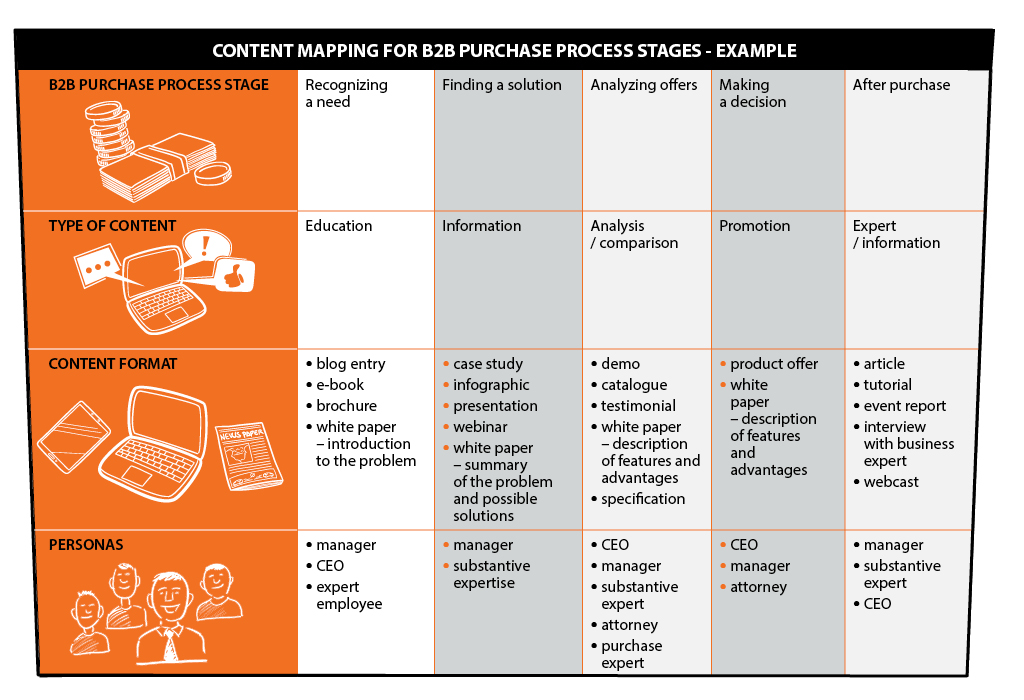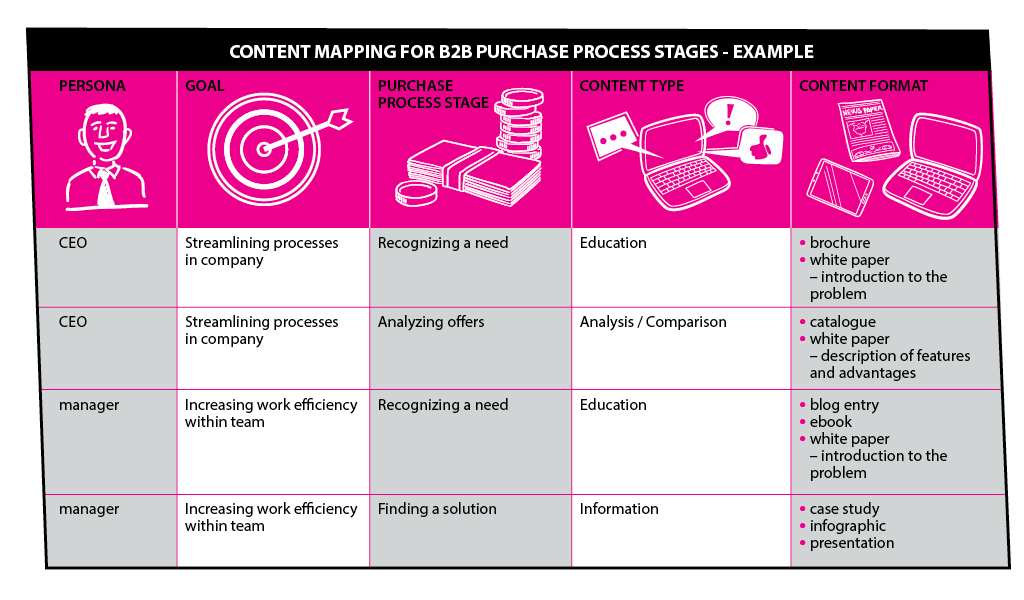
For 60% of marketers surveyed by the CMI and MarketingProfs (report 2018 B2B Content Marketing Benchmarks, Budgets, and Trends) the priority is to provide the right content to the right people in the right time. Where do you find information about customers’ changing needs? In the buyer’s journey analysis.
It may seem the purchase process in business is not far away from its B2C marketing counterpart. The digital transformation has revolutionized the habits of consumers, who are bringing their private practices to work. Customers’ independence in finding information has increased, and this also concerns B2C as well as B2B. So in order to tell the differences, we need to take a closer look at each stage of the buyer’s journey:
The greatest difficulty for a B2B content marketers is to create content, which not only answers the questions popping out at each stage of the buyer’s journey, but also take into consideration the differences between the people asking these questions, that is different buyer personas. Different things will be interesting to e.g. the head of IT and a financial director or the CEO. To be effective, it’s worth using content mapping. It’s a method allowing to adjust content to a given purchase stage, and to a given persona. It works like a matrix:
In practice, it could look like this:

 Building a content map in B2B content marketing is a demanding and time-consuming task, but the effort will definitely pay off. Your strategy will gain an anchor, and particular tactical solutions will be easier to verify. Content mapping is also invaluable support in creating the editorial calendar. It’s best to see all its advantages for yourself, so – time to get to work! If you have any doubts, we’ll be more than happy to help you!
Building a content map in B2B content marketing is a demanding and time-consuming task, but the effort will definitely pay off. Your strategy will gain an anchor, and particular tactical solutions will be easier to verify. Content mapping is also invaluable support in creating the editorial calendar. It’s best to see all its advantages for yourself, so – time to get to work! If you have any doubts, we’ll be more than happy to help you!
Kategorie: school of contentic, B2C, B2B